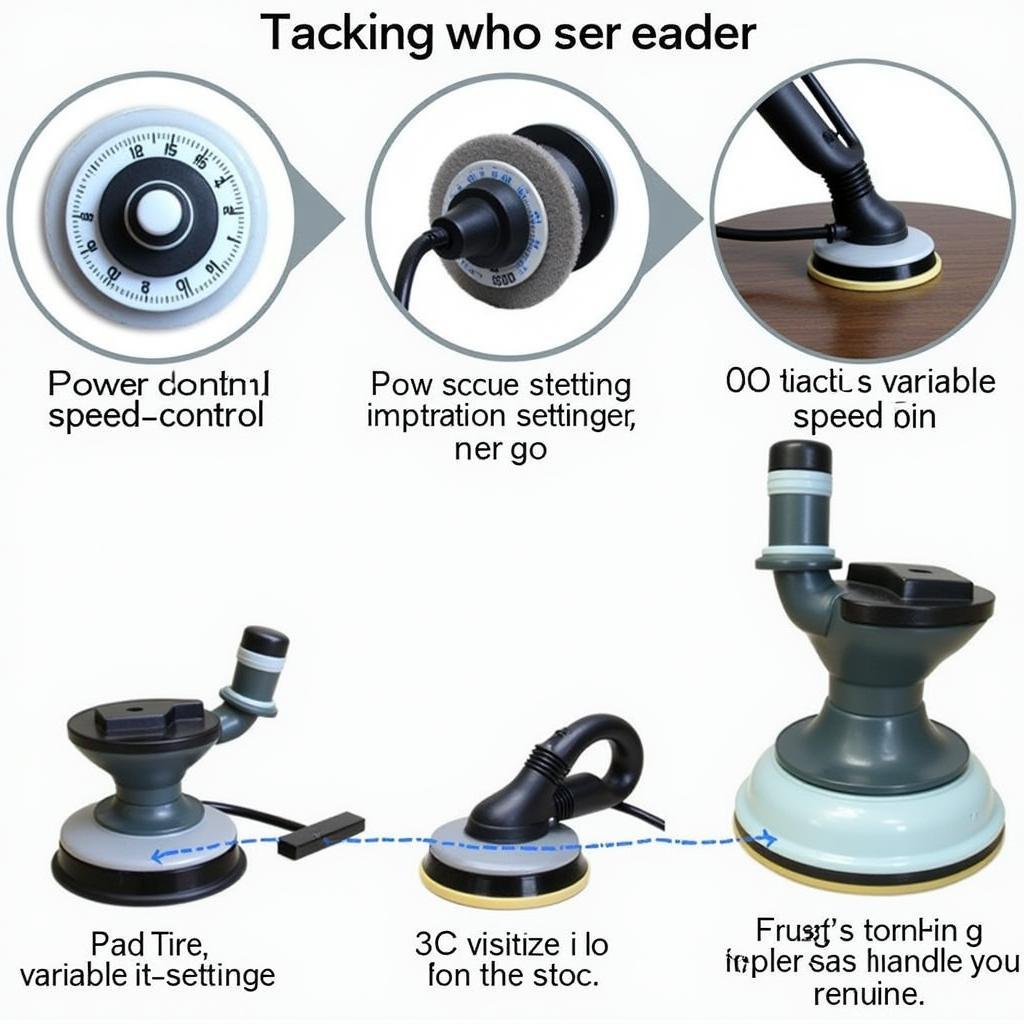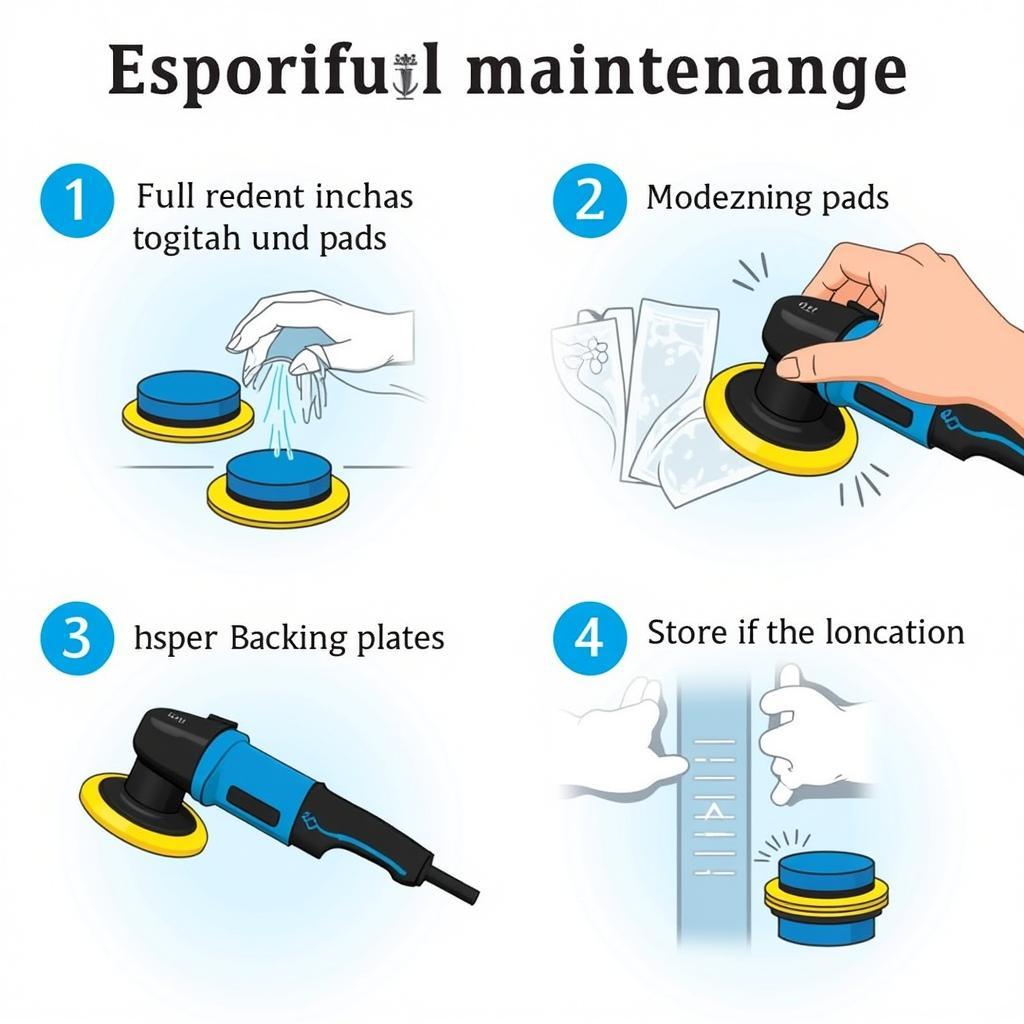A Best Car Buffer Tool can transform your vehicle’s appearance from dull and scratched to gleaming and showroom-ready. Whether you’re a detailing enthusiast or just looking to maintain your car’s paint, choosing the right buffer is crucial. This guide dives deep into the world of car buffers, helping you find the perfect tool for your needs.
Types of Car Buffers
Understanding the different types of car buffers is the first step in choosing the right one. There are three main categories: rotary, dual-action (DA), and orbital buffers.
Rotary Buffers
Rotary buffers are the most powerful type, offering the fastest correction for severe paint defects. However, their high speed and direct drive can also make them more difficult to control, increasing the risk of burning the paint if used improperly. These are generally recommended for experienced users.
Dual-Action (DA) Buffers
DA buffers are a popular choice for both beginners and professionals. They combine rotation and oscillation, mimicking the hand polishing motion. This reduces the risk of paint damage while still providing effective correction. DA buffers are versatile and suitable for various detailing tasks.
Orbital Buffers
Orbital buffers are the gentlest type, ideal for applying waxes and sealants. They have a random orbital motion, minimizing the risk of swirling or scratching. While they offer less correction power than rotary or DA buffers, they are very user-friendly and safe for beginners.
Key Features to Consider
When choosing the best car buffer tool, consider these essential features:
- Power: A higher wattage generally means more power and faster correction.
- Speed Settings: Variable speed settings allow you to adjust the buffer’s speed for different tasks, from aggressive cutting to fine polishing.
- Pad Size: The pad size determines the coverage area. Larger pads are generally faster, while smaller pads offer more control in tight areas.
- Weight and Ergonomics: A comfortable grip and balanced weight are crucial for extended use.
- Price: Buffers range in price from budget-friendly to high-end professional models.
 Essential Car Buffer Tool Features
Essential Car Buffer Tool Features
Choosing the Right Buffer for Your Needs
Selecting the best car buffer tool depends on your experience level and detailing goals.
- Beginners: An orbital buffer is a safe and easy-to-use option for applying wax and sealant. A DA buffer with variable speed settings is also a good choice for learning basic correction techniques.
- Enthusiasts: A DA buffer is a versatile tool for most detailing tasks, offering a balance of power and control.
- Professionals: Rotary buffers are preferred for heavy correction work, while DA buffers are still valuable for finishing and polishing. You might also consider specialized tools like best car buffer tool for scratches.
Maintaining Your Car Buffer
Proper maintenance is essential for prolonging the life of your car buffer.
- Clean the pads regularly: Remove any excess polish or compound after each use.
- Inspect the backing plate: Ensure it’s clean and free of damage.
- Store the buffer properly: Keep it in a cool, dry place away from direct sunlight.
- Lubricate moving parts: Follow the manufacturer’s recommendations for lubrication.
What is the best car buffer tool for beginners?
For beginners, a dual-action (DA) polisher is often the best choice. They are easier to control and less likely to cause damage than rotary polishers.
 Car Buffer Maintenance Tips: Cleaning, Inspection, and Storage
Car Buffer Maintenance Tips: Cleaning, Inspection, and Storage
Conclusion
Choosing the best car buffer tool requires careful consideration of your needs and experience level. Whether you’re a beginner or a seasoned professional, understanding the different types of buffers and their features will help you achieve the perfect finish for your vehicle. Remember, the right buffer combined with proper technique can transform your car’s appearance, making it look its best. Consider exploring beauty care tools and equipment and their uses for other tools.
FAQ
- What type of polish should I use with my car buffer?
- How often should I buff my car?
- Can I use a car buffer on all types of paint?
- What are the common mistakes to avoid when using a car buffer?
- How do I remove swirl marks from my car’s paint?
- What is the difference between a polishing pad and a cutting pad?
- How do I know if I’m burning the paint with my car buffer?
Common Situations and Questions:
- Situation: You notice swirl marks after buffing your car.
- Question: What caused the swirl marks and how can I remove them?
- Situation: Your car buffer isn’t removing scratches.
- Question: Am I using the correct type of pad and polish? Is the buffer powerful enough?
- Situation: The buffer is making a loud noise or vibrating excessively.
- Question: Is there a problem with the buffer, or am I applying too much pressure? Perhaps explore tools like those found in tools in nail care services and their uses.
Further Exploration:
- Learn more about specialized tools for specific car care tasks: milwaukee tools for car.
- Explore other tools and equipment related to different industries: nail care tools and equipment meaning and pictures.
Need assistance? Contact us via WhatsApp: +1(641)206-8880, Email: [email protected] or visit us at 910 Cedar Lane, Chicago, IL 60605, USA. We offer 24/7 customer support.

Leave a Reply